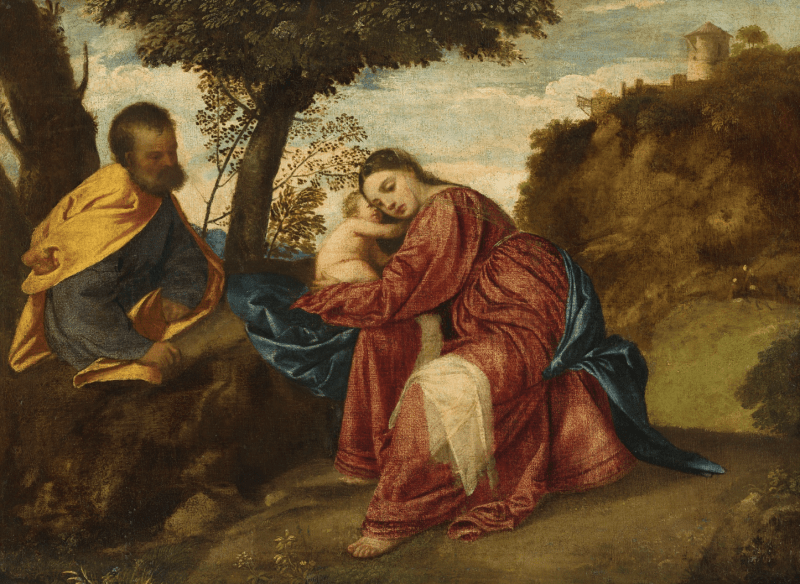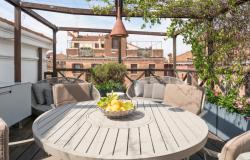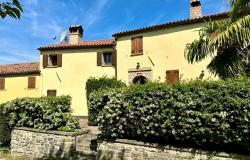Ed., July 7, 2024: The early Titian masterpiece in question ultimately set a new auction record for the artist, selling for $22.1 million at Christie’s. The previous record for a work by the Renaissance master was $16.9 million, according to ArtNews.
This week, an early work by 16th-century painter Tiziano Vecellio (better known as Titian) is set to go on the auction block. One of the last of the master’s works that’s still privately owned, the extraordinary painting is believed to have been painted in 1508 when Titian was barely 20 years old.
The Venetian Renaissance master’s Rest on the Flight into Egypt, depicting the Holy Family on their arduous journey from Bethlehem to Egypt, will go to the highest bidder on July 2 at Christie’s in London. Part of the famed auction house’s Classic Week Part I — focusing on art from antiquity to the 20th century — the oil on canvas panel is expected to fetch an estimated price of between £15 and £25 million ($18m-$32m).
According to Christie’s, the painting’s original patron is unknown, but a timeline of ownership can be traced to the early 17th century. It first belonged to a Venetian spice merchant Bartolomeo della Nave. Over the following centuries, it passed through the hands of various marques, dukes, archdukes and aristocrats.
Apart from the painting’s artistic brilliance, the fact that the picture was stolen not once, but twice, over its lifetime adds a mystique that’s likely driven up its value.
The painting was first looted from the Belvedere Palace in Vienna by Napoleon’s troops during the early 19th century. Then, in 1995, a thief nabbed it from Longleat House in England. After a nearly seven-year search for the painting, art detective Charles Hill found it wrapped in a plastic bag at a London bus stop. Mr. Hill’s other claim to fame was helping to recover Edvard Munch’s 1893 version of The Scream after it was swiped from the National Museum in Oslo in 1994.
If the price of Titian’s painting is too rich for your blood, Italy Magazine’s resident art historian Laura Morelli suggests other places in Italy to see Titian’s genius in person.
Christ Carrying the Cross (ca. 1505-07)
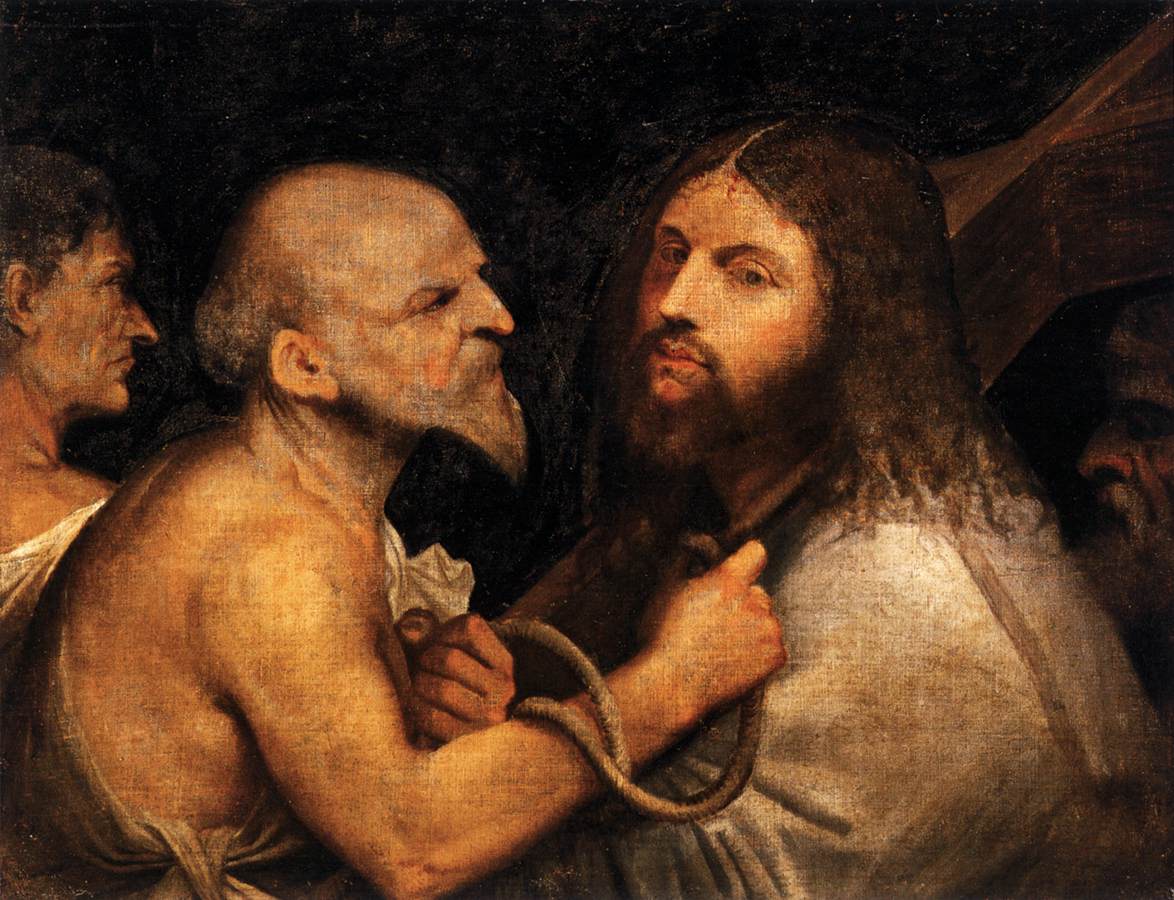
Titian’s captivating portrayal of Christ Carrying the Cross uses subdued flesh-tones dominated by shades of brown against an almost black background, rendering it dark and somber. It’s a rare close-up of a common Christian subject that suggests the artist may have been familiar with similar compositions from northern Europe.
“It may be a case of the pupil taking over the teacher,” explains Morelli. “Art historians have long debated whether this work is by Titian or his contemporary, Giorgione. Both men were acclaimed pupils of the Venetian painter Giovanni Bellini. Giorgione’s promising career was cut short when he died of the plague in 1510, while Titian went on to live well into his 80s.”
Where to see it
Scuola Grande di San Rocco / San Polo 3052, Venice / Website
Risen Christ (ca. 1511-12)
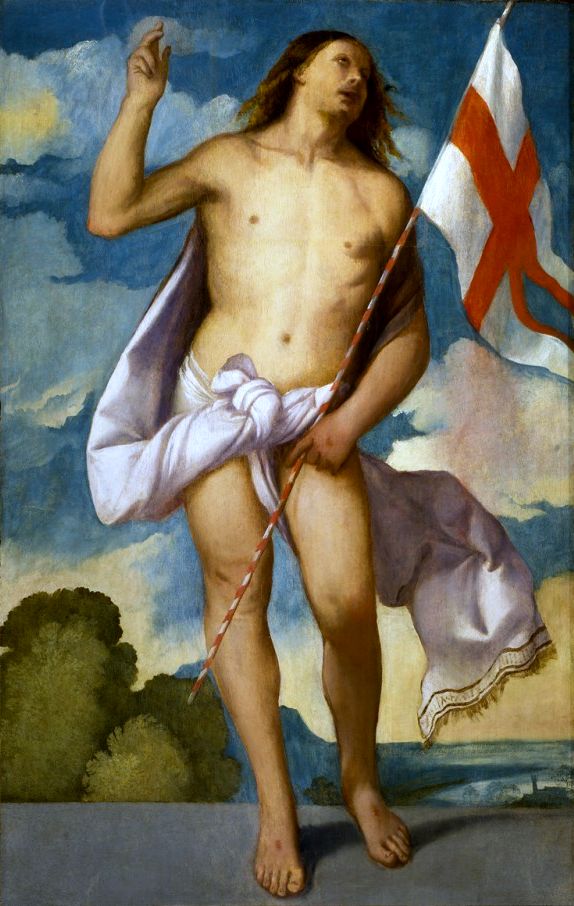
This early painting by Titian depicts Christ victorious after the resurrection. Indicative of the High Renaissance art movement, the oil on canvas painting shows Christ standing atop his tomb holding a flag in one hand and the other raised in a triumphant blessing.
According to Morelli, little is known about the original context of the work. It entered the Uffizi in the early 2000s after being held in the private collection of an Italian noble family.
Where to see it
Uffizi Galleries / Piazzale degli Uffizi 6, Florence / Website
Sacred and Profane Love (ca. 1514)
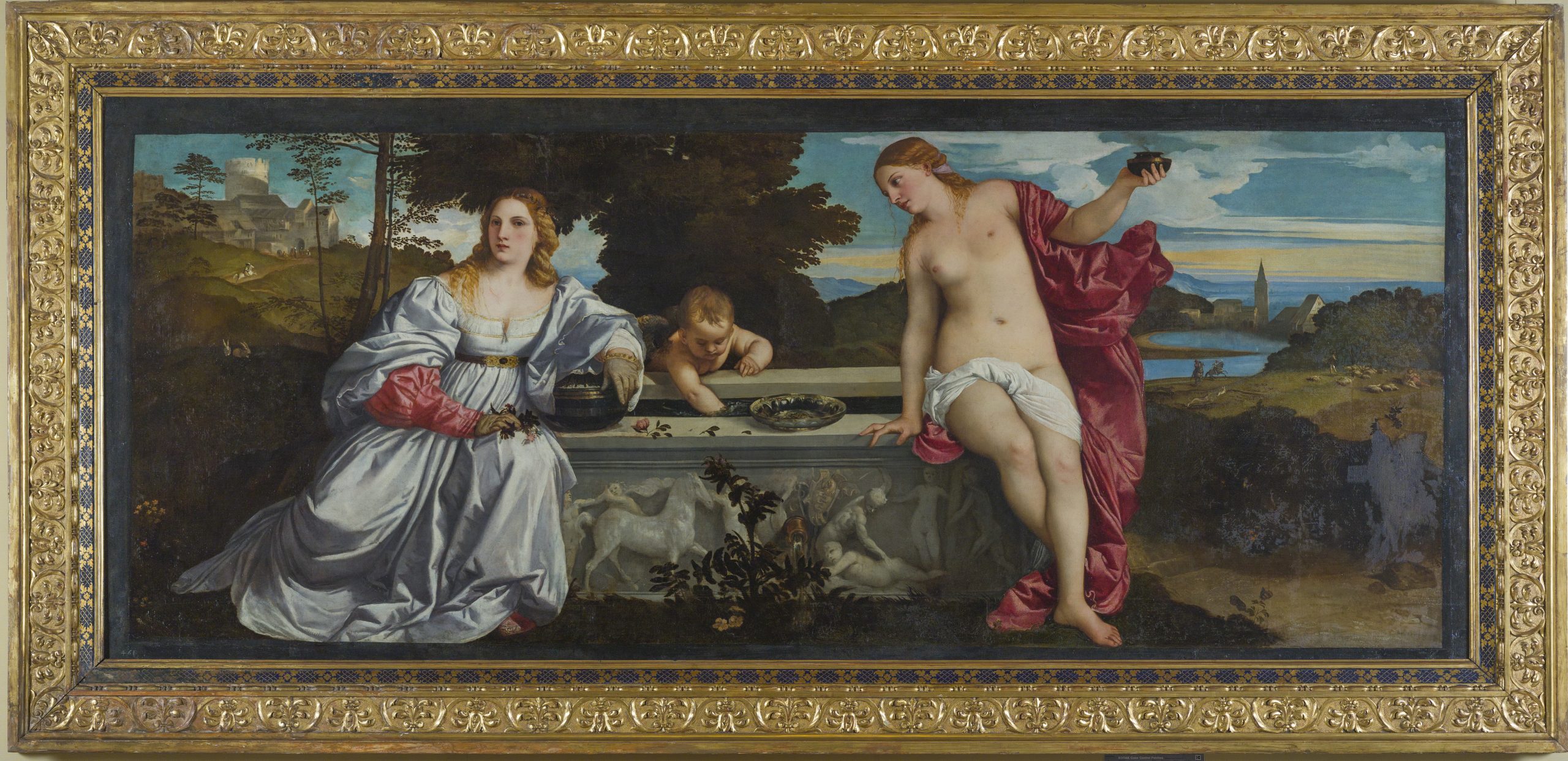
One of Titian’s most celebrated works, Amore Sacro e Amor Profano depicts two women bookending an ancient sarcophagus in the presence of Cupid. The roses suggest a theme of love expressed in its dual nature of both sacred and profane.
“The painting was most likely made for Niccolò Aurelio, a secretary working for the Venetian Council of Ten. Scholars believe the painting was commissioned in celebration of Aurelio's marriage to Laura Bagarotto,” says Morelli.
Where to see it
Borghese Gallery / Piazzale Scipione Borghese 5, Rome / Website
Portrait of a Woman in Blue (ca. 1536)
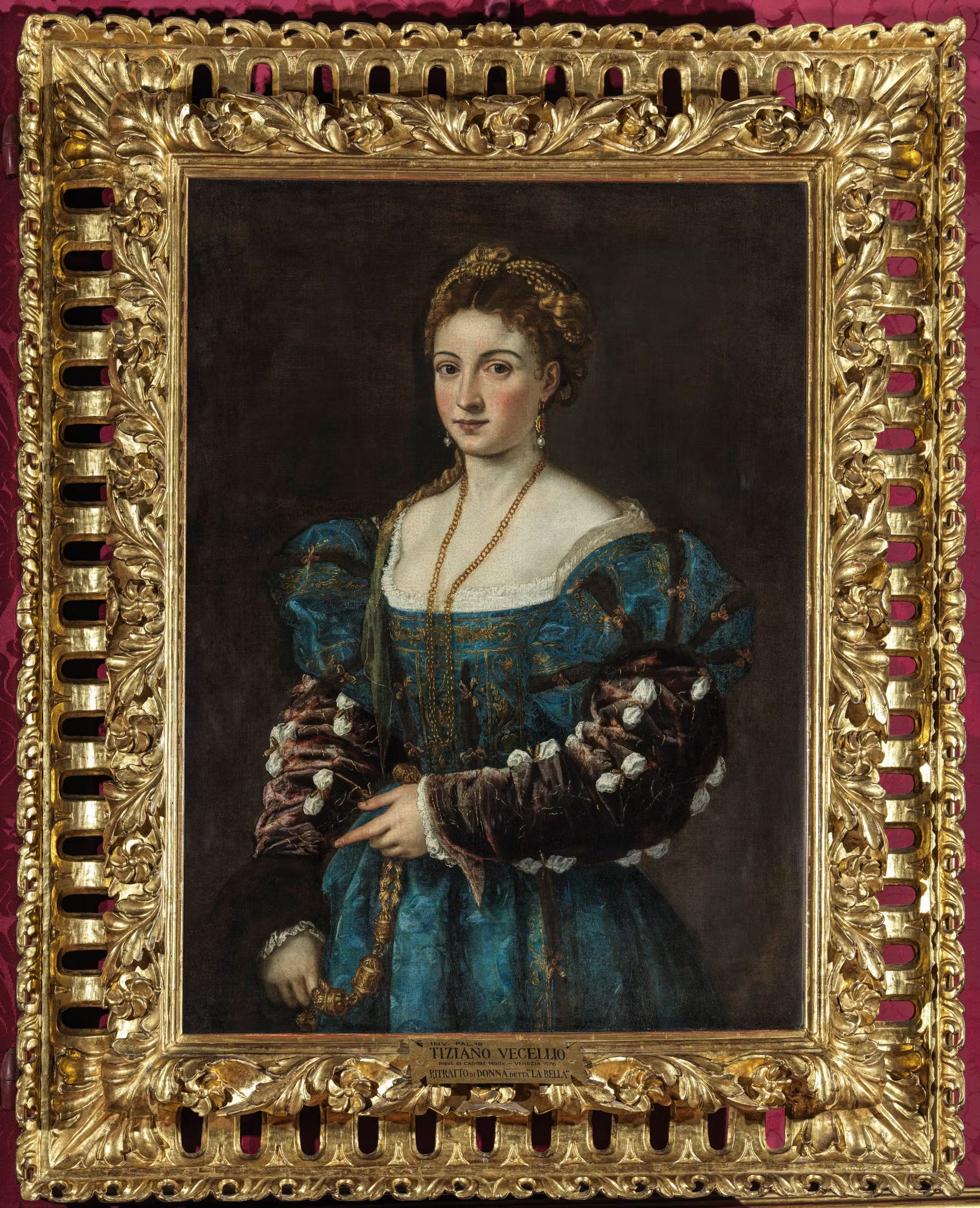
Titian’s Portrait of a woman in Blue (aka La Bella) is one of the most famous paintings of the later years of Titian's artistic career. The young woman wearing a blue damask dress is said to represent the Renaissance woman ideal.
According to Morelli, the identity of the sitter in this painting remains unknown. “Like many of the subjects of Titian’s portraits, she is depicted in three-quarter view, with a focus on [her] idealized beauty and sumptuous details of jewelry and textiles,” Morelli says.
Where to see it
Pitti Palace / Piazza de' Pitti 1, Florence / Website
Saint Anthony frescoes (ca. 1511)
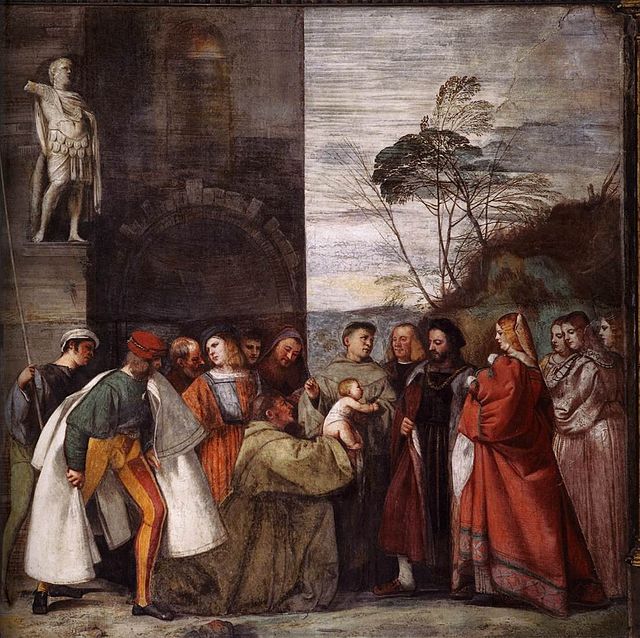
Visit the Scuola del Santo in Padua for a rare chance to see beautiful examples of Titian’s work in fresco; these depict miracles attributed to Saint Anthony, the city’s patron. To carry the series to completion, Titian collaborated with other artists here at this confraternity in the Venetian hinterland, Morelli notes.
Where to see them
Scuola del Santo / Piazza del Santo 11, Padua / Website
